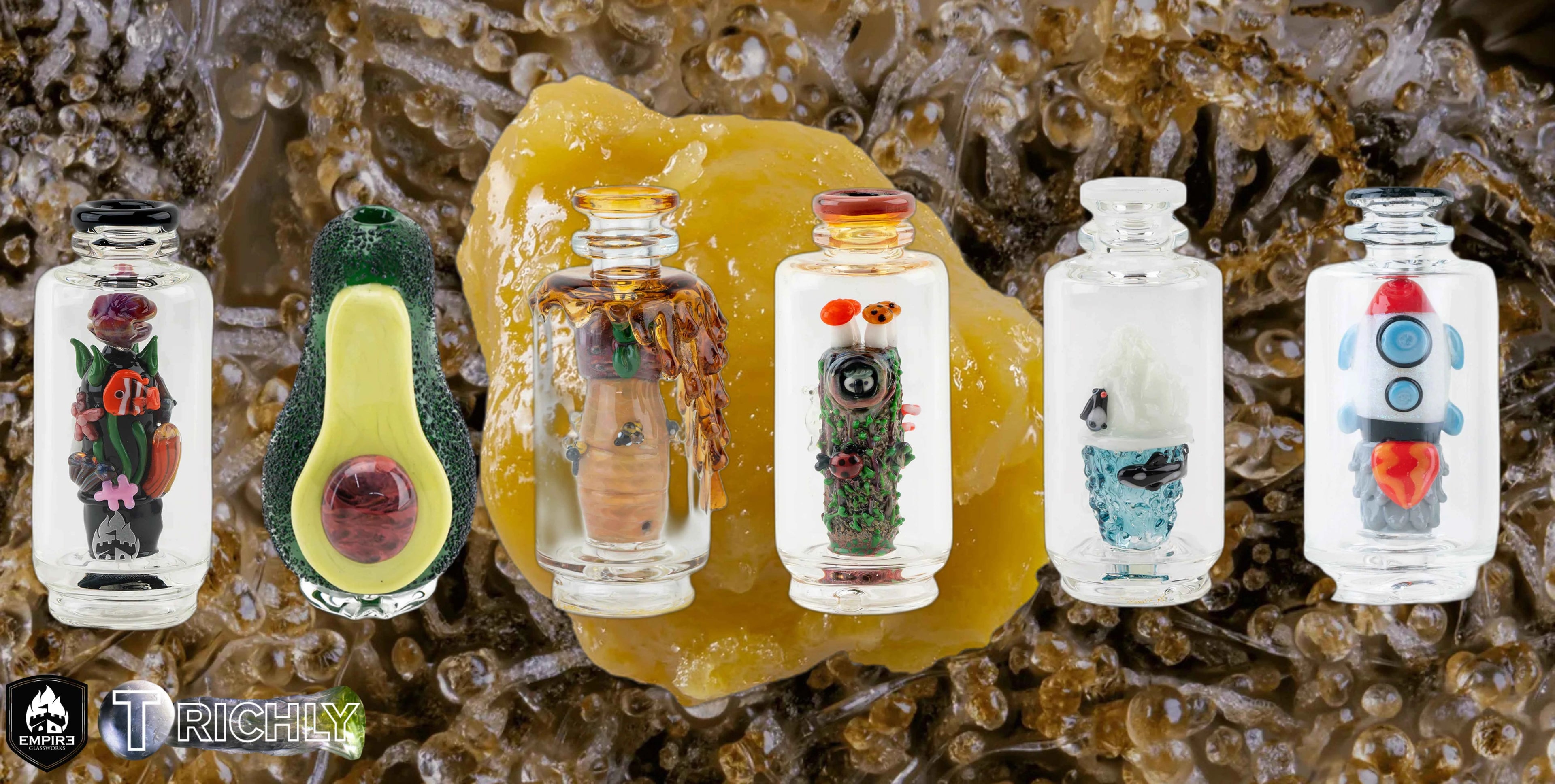If you want to truly understand cannabis—from how it grows to how it works—you need to start with the plant itself. Every cannabinoid, terpene, and flavor comes from specific parts of the cannabis anatomy.
This guide covers the basics: leaves, pistils, calyxes, trichomes, and roots. Whether you're a new grower, a curious consumer, or just want to know what you're looking at on your flower, this article breaks it all down. Scroll to the end for a quick-hit glossary you can bookmark.
1. Leaves: The Powerhouse of the Plant
There are two main types of leaves on a cannabis plant:
- Fan Leaves – The large, iconic leaves that resemble the classic cannabis symbol. They absorb sunlight and help drive photosynthesis.
- Sugar Leaves – Smaller leaves nestled in the buds, often coated in sticky trichomes. These are usually trimmed off after harvest but may be used in concentrates or pre-rolls.
While fan leaves aren’t rich in cannabinoids, they’re vital to the plant’s health. Sugar leaves, on the other hand, contribute to the potency of the final flower.
2. Pistils: The Female Reproductive Organs
Pistils are the tiny, hair-like strands that extend from the calyxes (more on those below). They start white and change color—orange, red, or brown—as the plant matures. While they don’t affect potency, pistils help growers track maturity and plant sex.
Only female plants grow the cannabinoid-rich flowers you buy. Pistils are a clear sign you’re dealing with a female.
3. Calyxes: The Bud Building Blocks
Calyxes are the tear-shaped nodules that make up the base structure of each cannabis bud. They're part of the flower itself and are covered in resinous trichomes. Each calyx protects the plant’s reproductive organs and plays a major role in potency, aroma, and appearance.
When you look at a nug, you're looking at stacks of calyxes—often tightly packed and loaded with cannabinoids.
4. Trichomes: Where the Magic Happens
Trichomes are the tiny, crystal-like glands that produce cannabinoids (like THC and CBD) and terpenes. They’re sticky, fragrant, and absolutely essential to the plant’s effects.
There are three main types:
- Bulbous Trichomes – Smallest, mostly on the stalk.
- Capitate-Sessile Trichomes – Medium size, found on sugar leaves and calyxes.
- Capitate-Stalked Trichomes – Largest, most abundant on mature flowers. These are the main source of cannabinoids.
Trichome color and clarity (clear → cloudy → amber) also help growers time their harvest for desired effects.
5. Roots: The Foundation
Often overlooked, the roots are critical for water, nutrient uptake, and overall plant health. Healthy roots lead to healthy buds. They anchor the plant and interact with beneficial microbes in the soil (or hydro system) to help regulate growth and nutrient absorption.
Root rot, poor drainage, or nutrient lockout can ruin an otherwise healthy plant—so don’t underestimate what’s going on underground.
Glossary: Quick Terms to Know
- Fan Leaf: Large photosynthesis leaf with no cannabinoid content.
- Sugar Leaf: Smaller leaf inside the bud, often trichome-rich.
- Pistil: Hair-like structure that indicates female sex and maturity.
- Calyx: The bud’s building block, rich in resin and cannabinoids.
- Trichome: Glandular structure that produces cannabinoids and terpenes.
- Capitate-Stalked Trichome: The main trichome type responsible for potency.
- Root System: Underground structure responsible for nutrient/water uptake.
The Bottom Line
Understanding cannabis anatomy helps you make better choices—whether you're shopping for flower, growing at home, or just curious about how the plant works. Each part of the plant plays a role, but trichomes and calyxes are where the potency and personality of each strain really live.
At Trichly, we’re all about whole-plant integrity—from root to resin. Whether you're buying flower, oils, or edibles, knowing your anatomy helps you choose with confidence.


0 comments